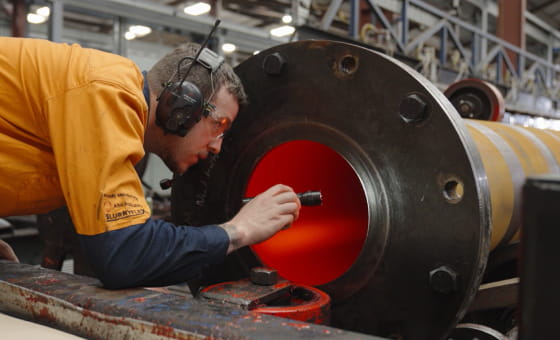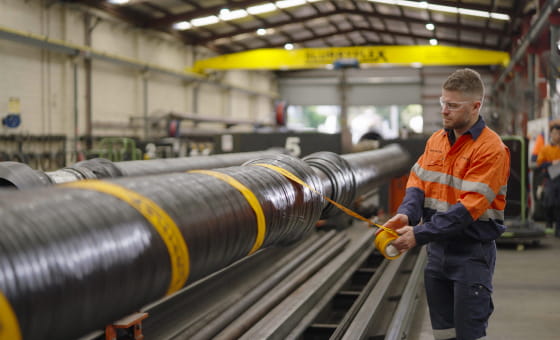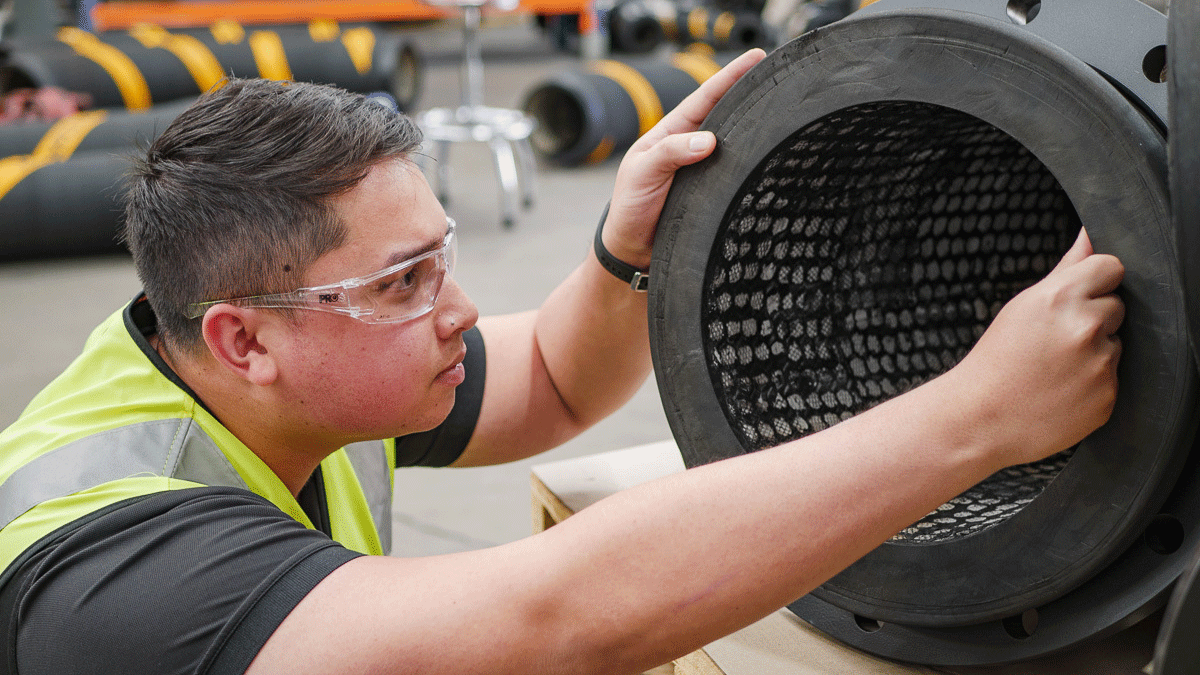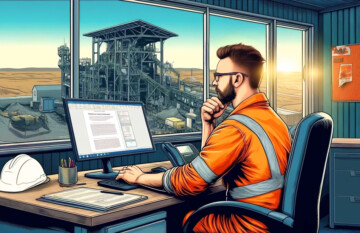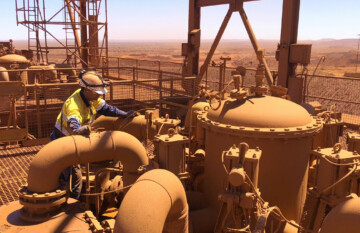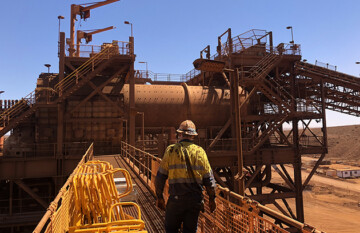If you’re spending too much time bandaging leaking rubber-lined spools or replacing standard mining hose on high-wear slurry lines, there’s good news—there are better options out there.
Most mineral processing plants are designed with rigid bends made from HDPE or rubber-lined steel. But these spools have their limitations—they’re prone to wearing, cracking, and leaking in severe slurry applications.
Maintenance teams are now using better technology. Instead of rubber-lined steel bends, they’re switching to ceramic-lined mining hose, which is both flexible and durable.
Ceramic-lined mining hose—when it’s made properly—has alumina ceramic tiles heat bonded into the rubber wear liner (inner tube) of the hose. This gives high wear resistance, while the hose provides flexibility and rebounds slurry particles. It’s the best of both worlds.
In this article, we’ll explain three common applications we encounter in process plants where ceramic-lined hose performs better than rigid spools.
1. In high-wear areas
In severe service applications, like iron ore de-sands plants and coal process plants, you need slurry piping that can handle large, jagged, or high-velocity slurry particles. When rubber-lined piping simply isn’t lasting the distance in these severe wear areas, ceramic-lined mining hose is worth a try.
There are three reasons for this.
First, ceramic tiles are made of fine grain alumina. This highly resists abrasion from rough slurry because it absorbs and dissipates impact from particles.
Second, when you combine this hard ceramic liner with the ‘trampoline’ effect of rubber mining hose, you get piping that absorbs particle impact and reduces shattering and debonding.
Third, you can better control wear locations at the ends or in specific sections of the hose. Just one part of the hose might take a beating, while the rest of the hose is fine. In this case, you can customise the hose to have ceramic tiles on only one section.
For example, you can tile the bottom quadrant of straight hose to manage abrasion or sliding bed wear, or the outer arcs on bends for erosion wear.
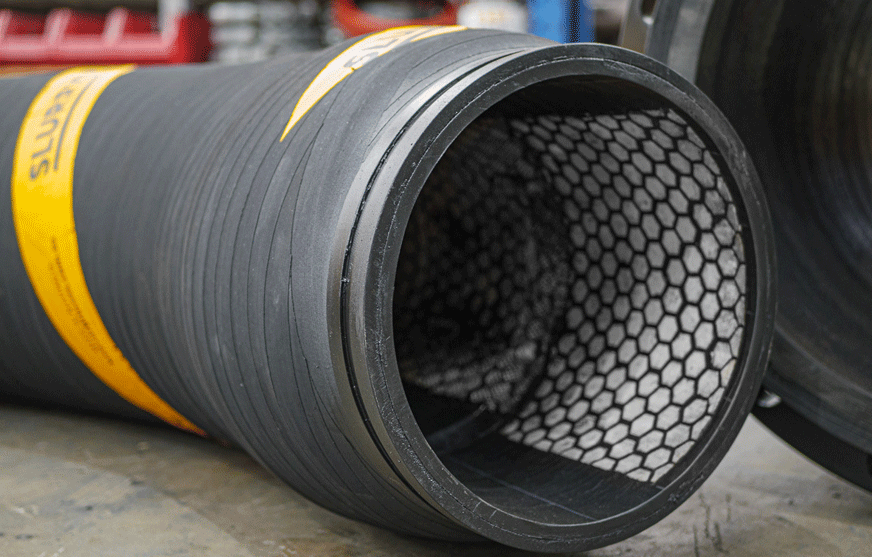
Mining hose with one third of the internal surface tiled
Or you can choose to tile the full internal surface of the hose. If you aren’t sure of the wear locations, consider tiling the full 360° lining.
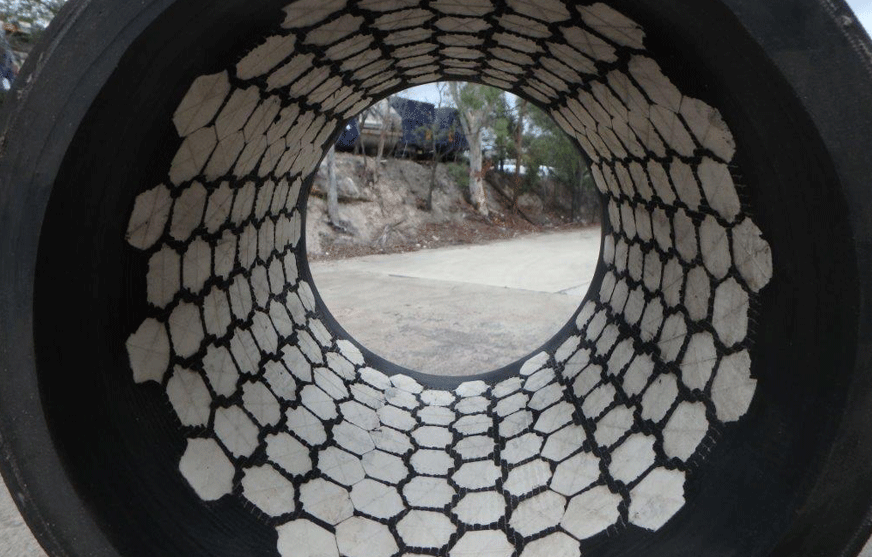
Mining hose with 360° tiling
2. On bends or elbows
You’ll often see localised wear on bends in slurry piping. When slurry reaches a bend at high velocity it often creates high wear spots on the outer arc of bend where the impact is highest. This means localised wear spots and eventual pipe failure. In small radius bends, like cyclone overflows, this wear is even more accelerated.
Ceramic-lined hose does two things to reduce wear in this situation. The ceramic tiles increase the wear life of the pipework by deflecting the particles. At the same time, rubber hose absorbs and dissipates the impact from high-velocity slurry.
We’ve seen many customers use ceramic-lined hose to increase the lifespan of bends in their process plants. One of our iron ore customers decided to use ceramic-lined mining hose instead of ceramic-lined steel elbows in their cyclone overflow piping. It’s increased the lifespan of the piping from six months to more than four years.
3. When the bore size changes
If your slurry piping system has changes in bore size, you’ll find that the mismatched seams create turbulence in the slurry. This causes accelerated wear in the downstream piping. You’ll often see this around slurry pumps where bore size gets larger or smaller to match the pump pipework.
Using mining hose in these areas of your plant will reduce vibration from the pump, reduce noise, and decrease pump wear.
Ceramic-lined hose gives extra wear resistance while still being able to flex and move with impact and pump vibration, so you end up with pipework that lasts longer.
More uptime for your plant
Wear costs money—and often lots of it. Many of our customers tell us that their old rubber-lined steel elbows simply aren’t cutting it and are causing unnecessary work for their maintenance teams.
While it might have been standard practice to use rigid elbows in processing plants in the past, today, there are more advanced ways to solve this problem.
In our experience, ceramic-lined mining hose is a better alternative. It increases your plant’s uptime, is proven, and cost-effective—so you can spend more time finding throughput wins in other areas of your plant.




